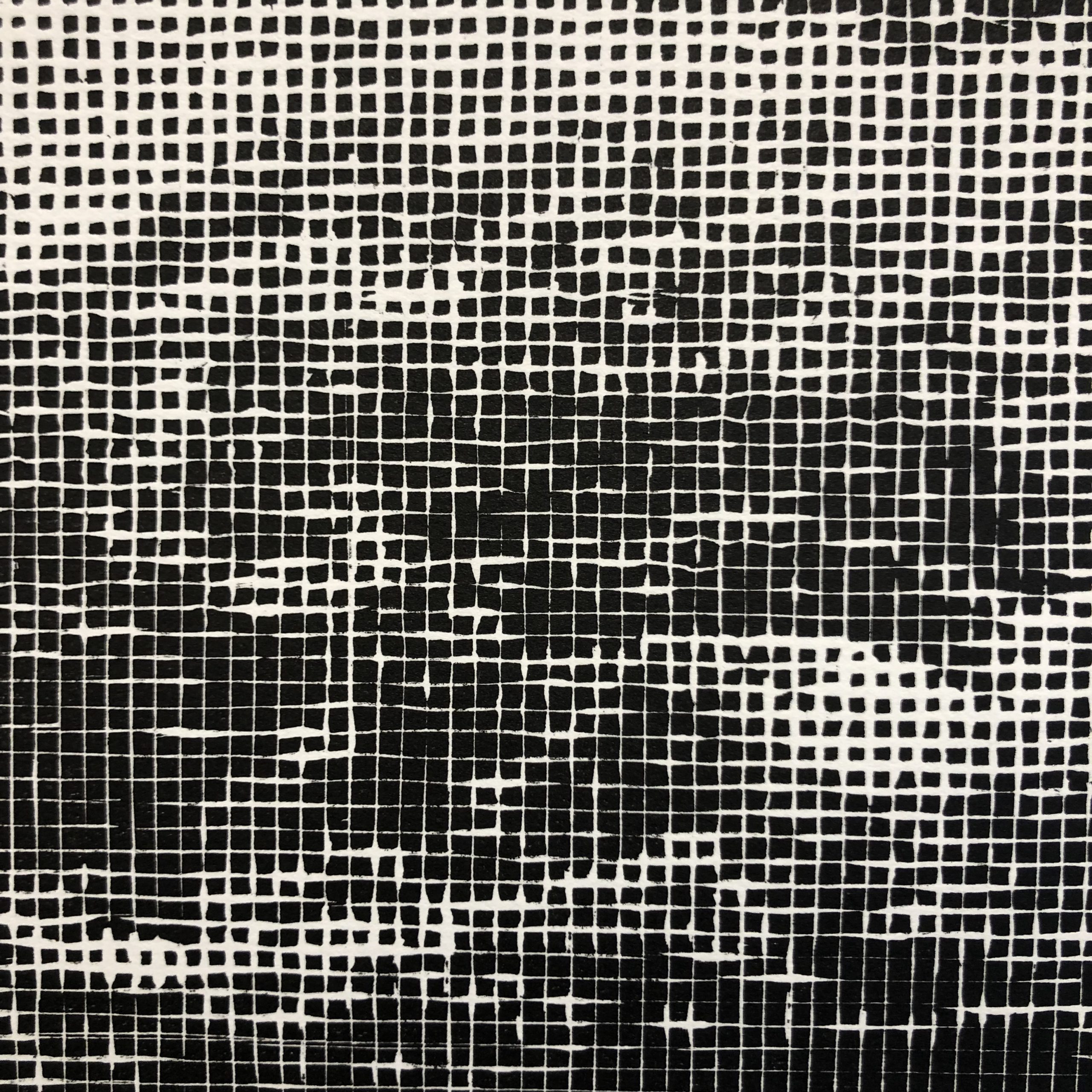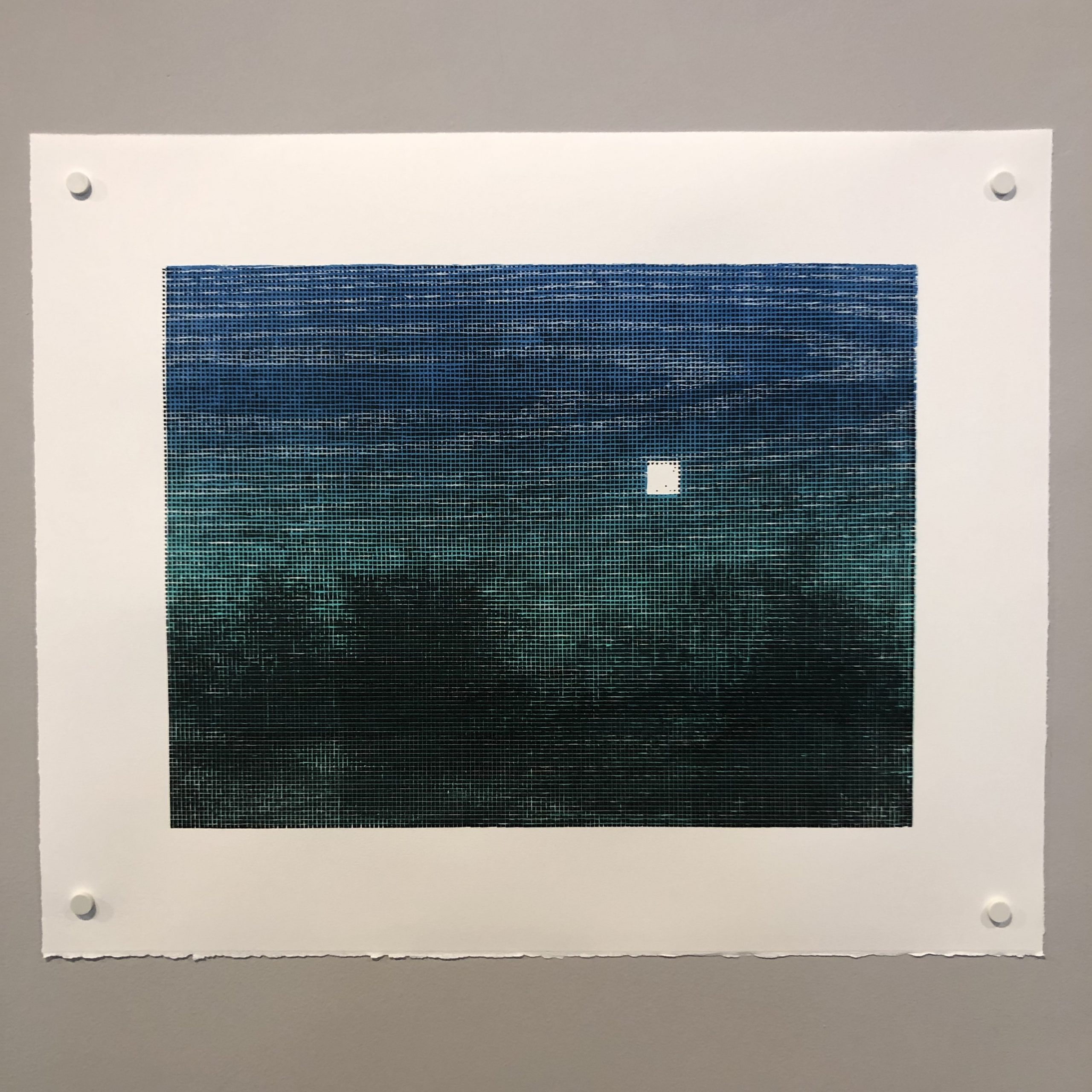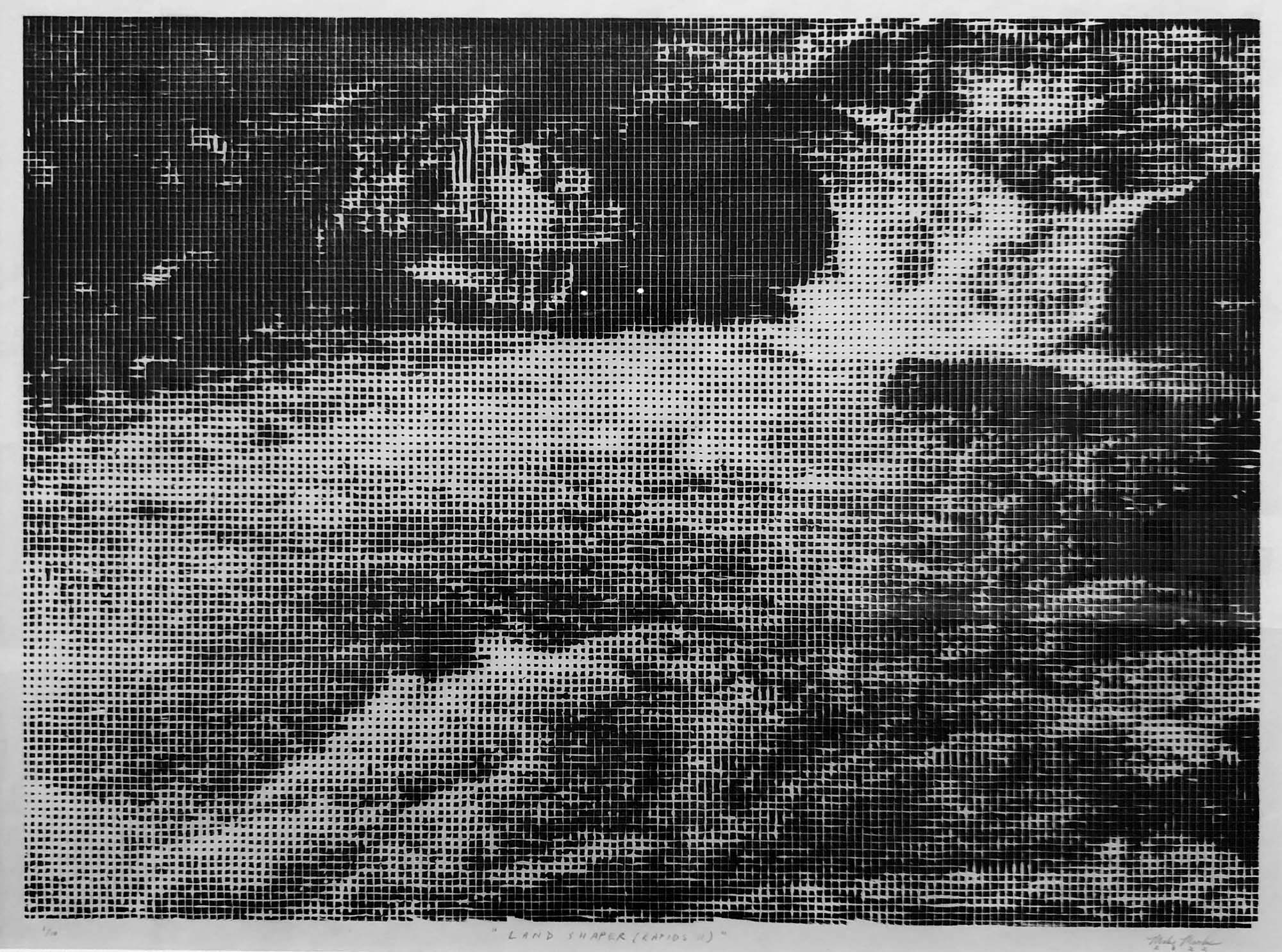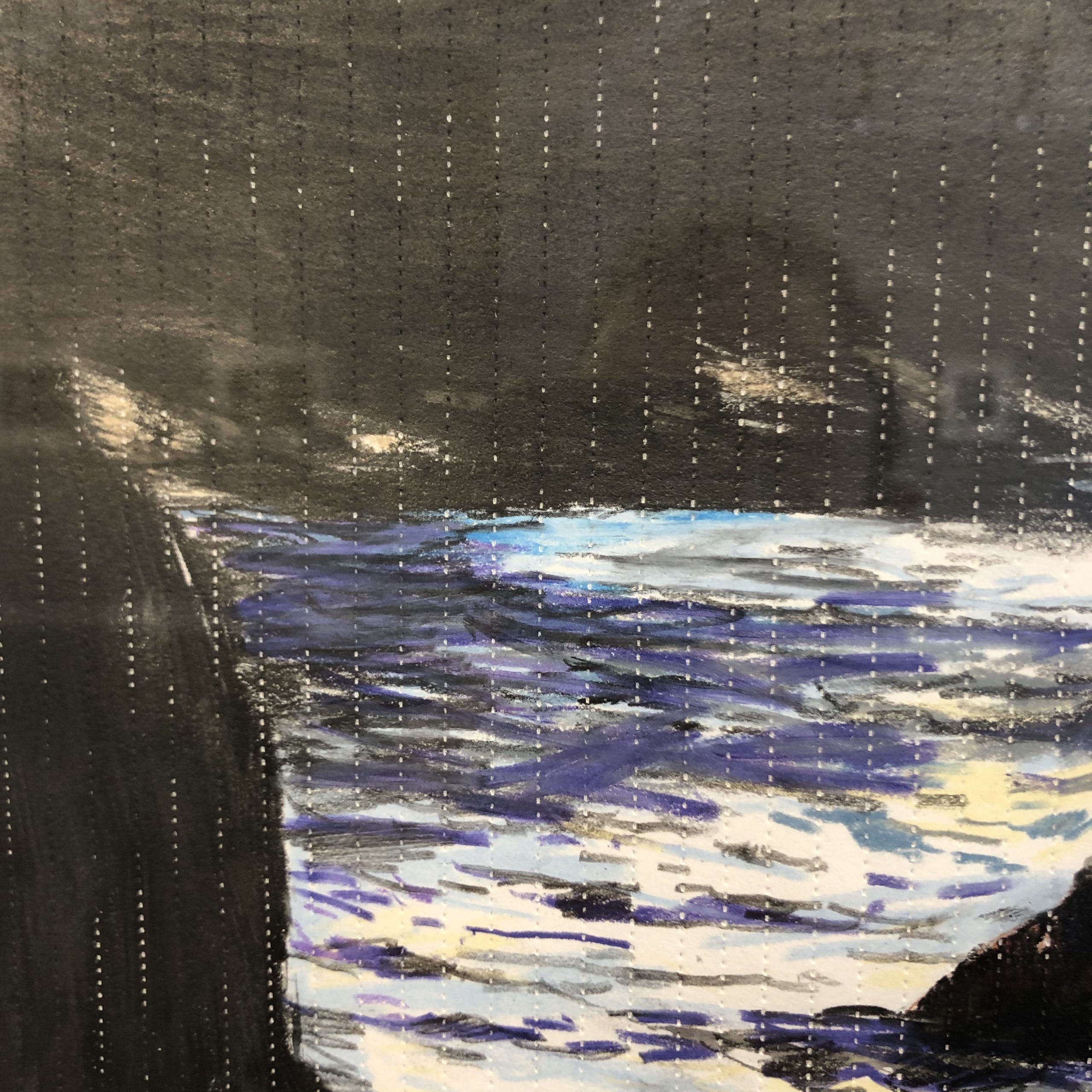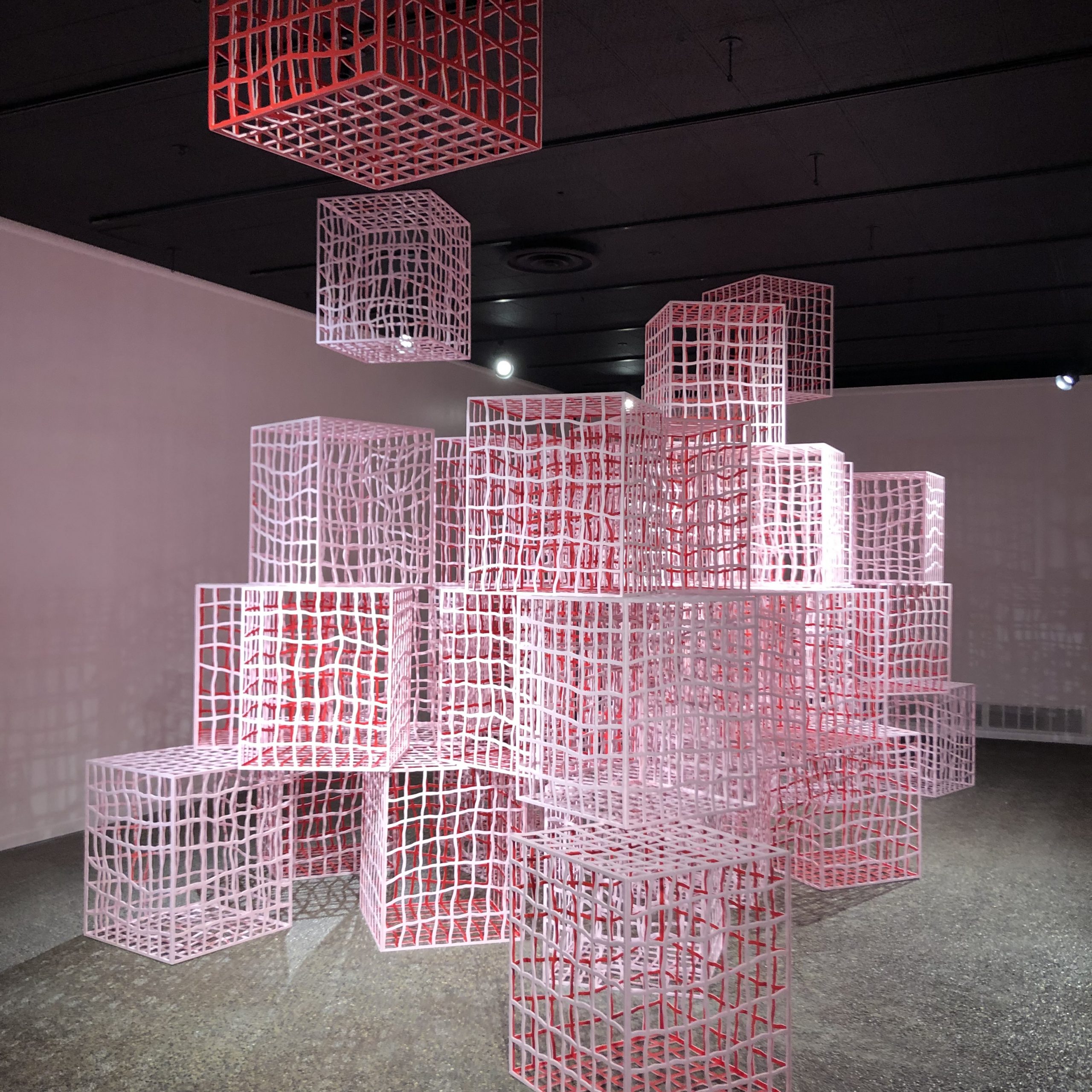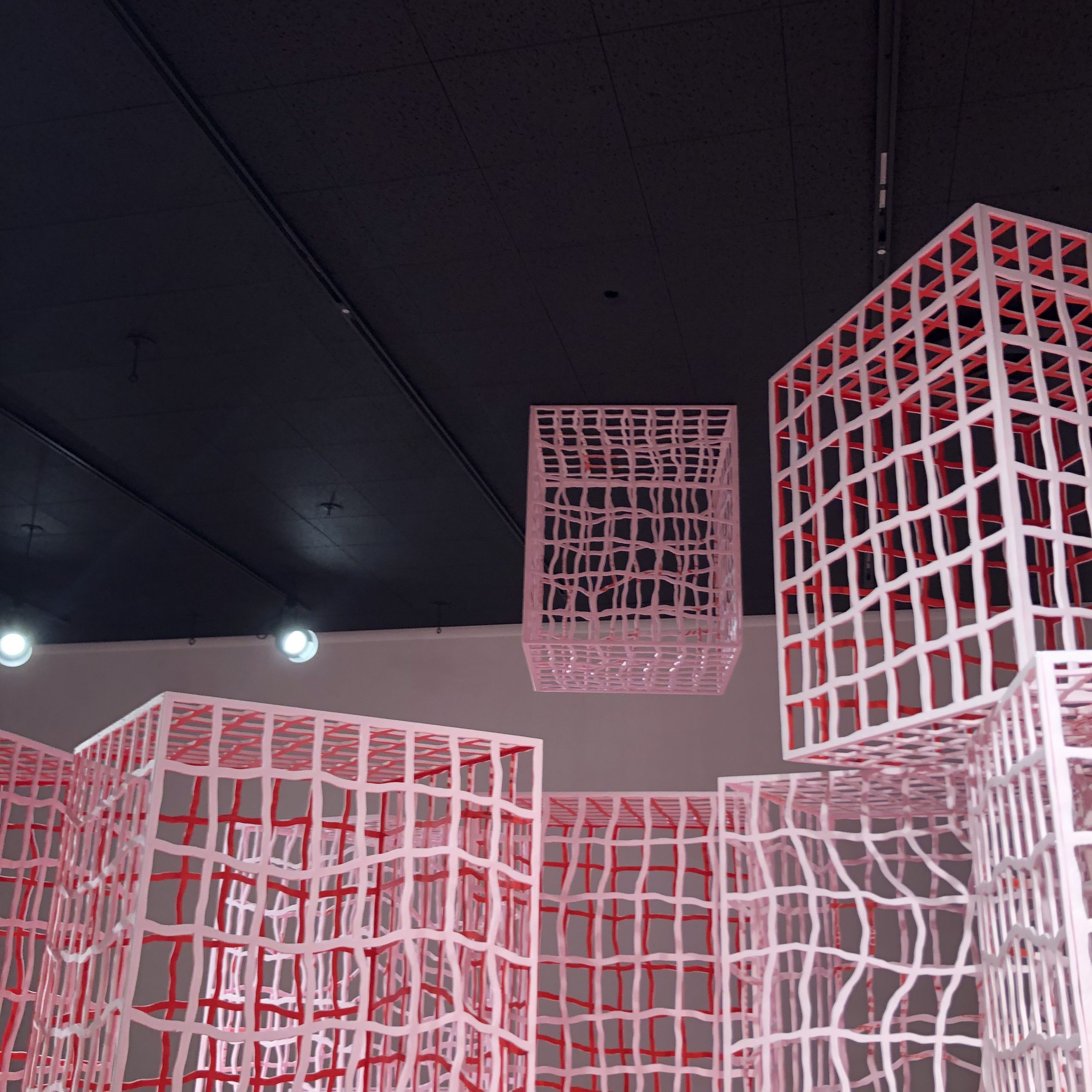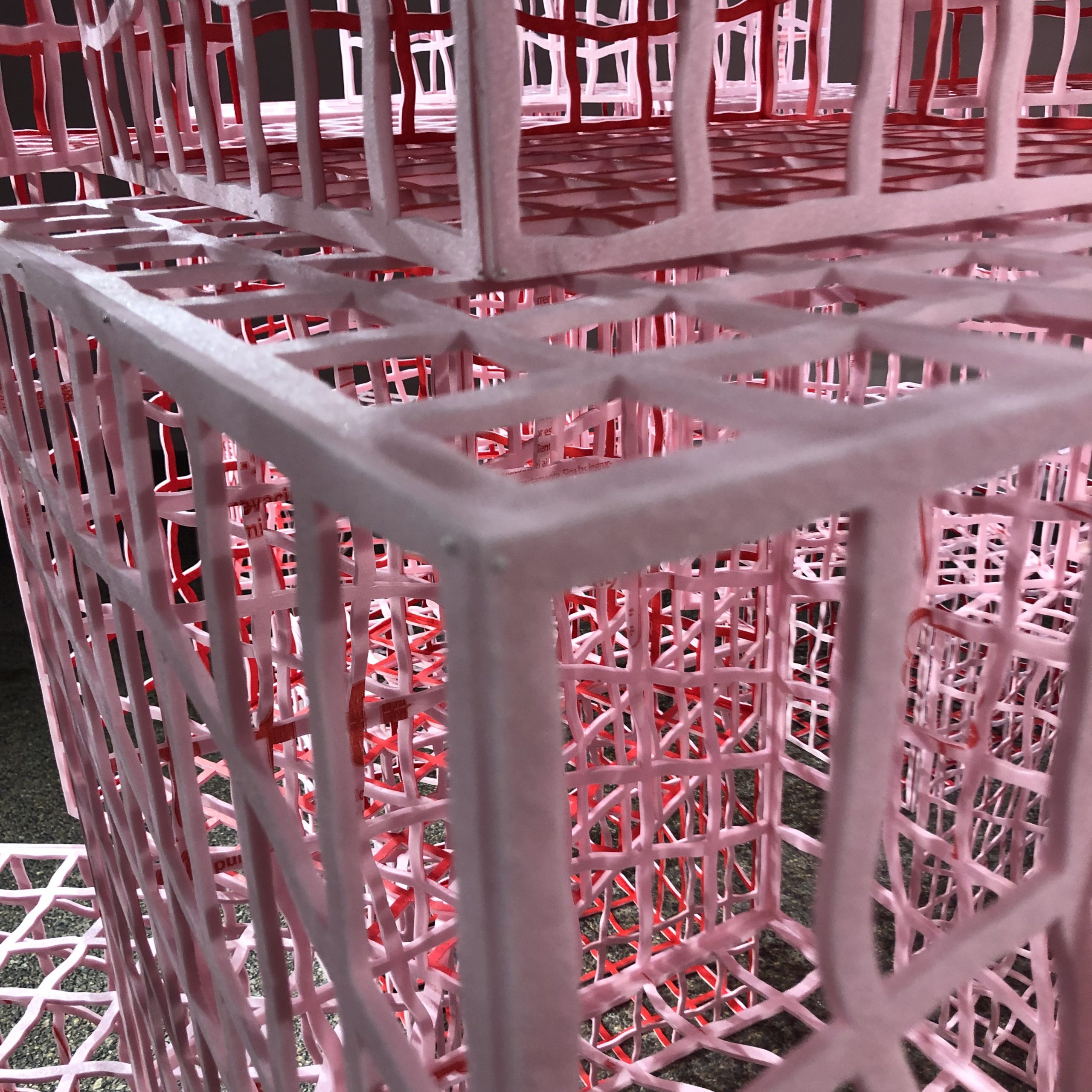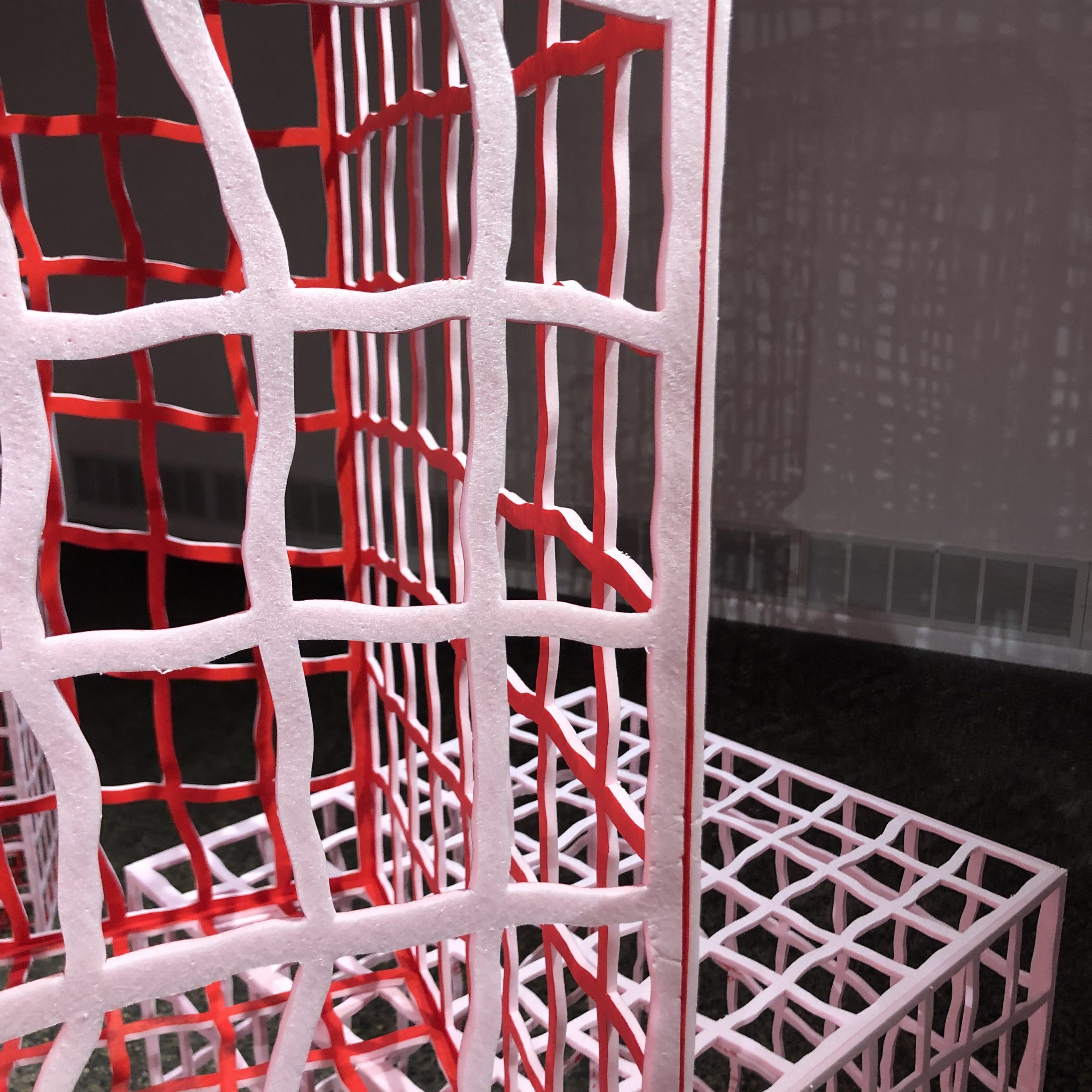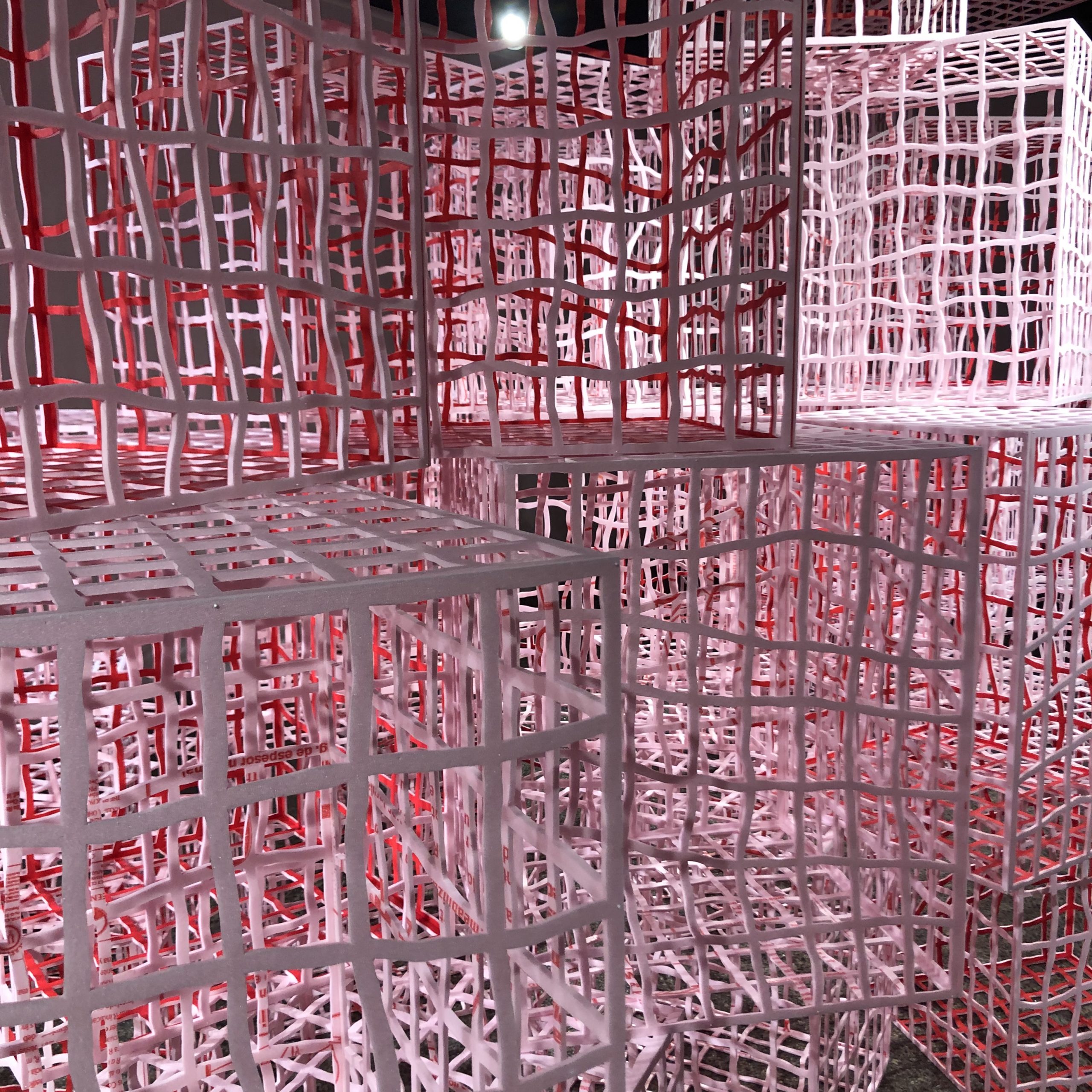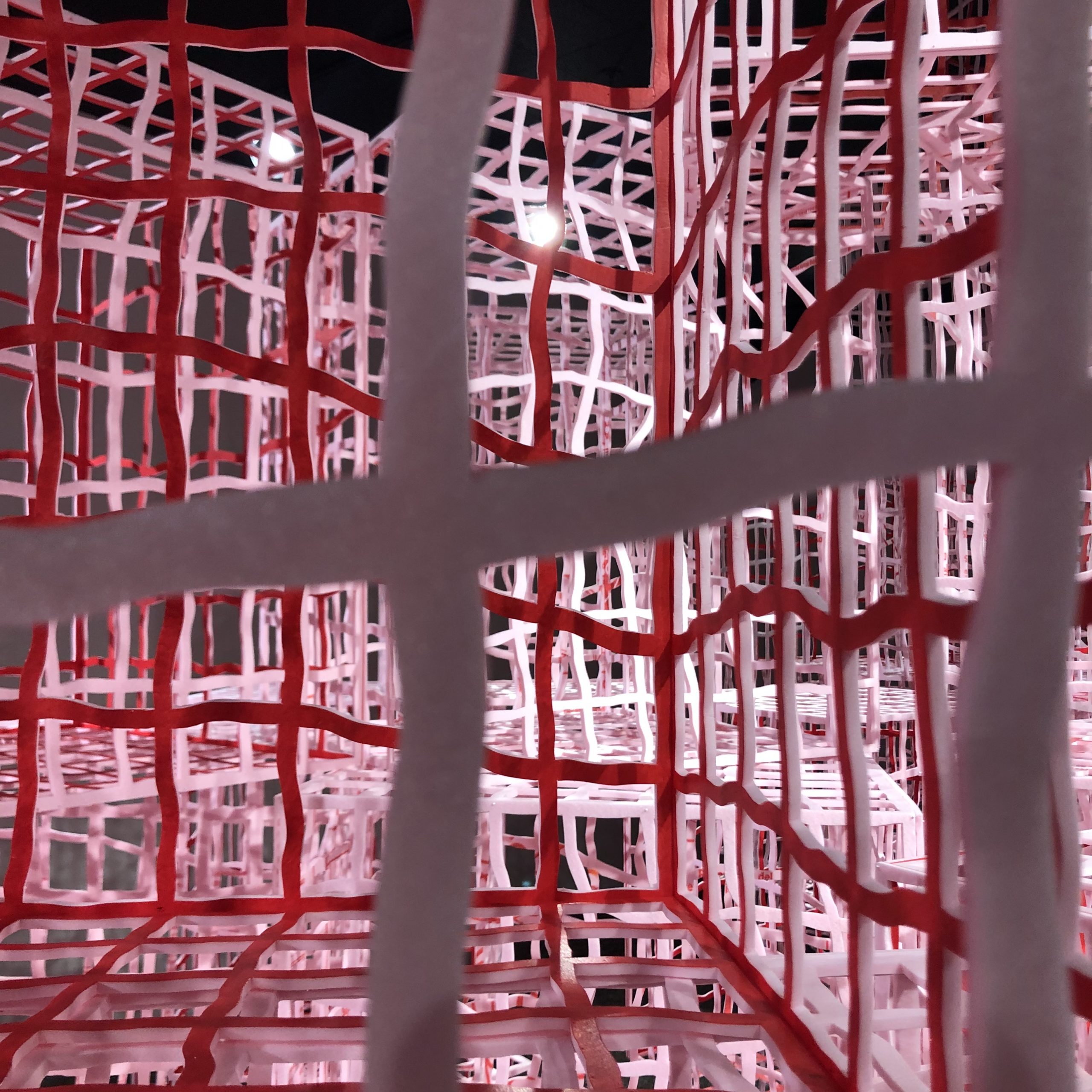In this short conversation between Kelsey Bosch and Alonzo Pantoja, they reflect on the exhibition, पौर्णिमा : : Gazing Into the Full Moon Night, by Roshan Ganu. This show runs October 16 – November 12, 2022 at SooVAC, 2909 Bryant Avenue South #101, Minneapolis, MN 55408.
For all reviews, there is an accompanying printed zine.
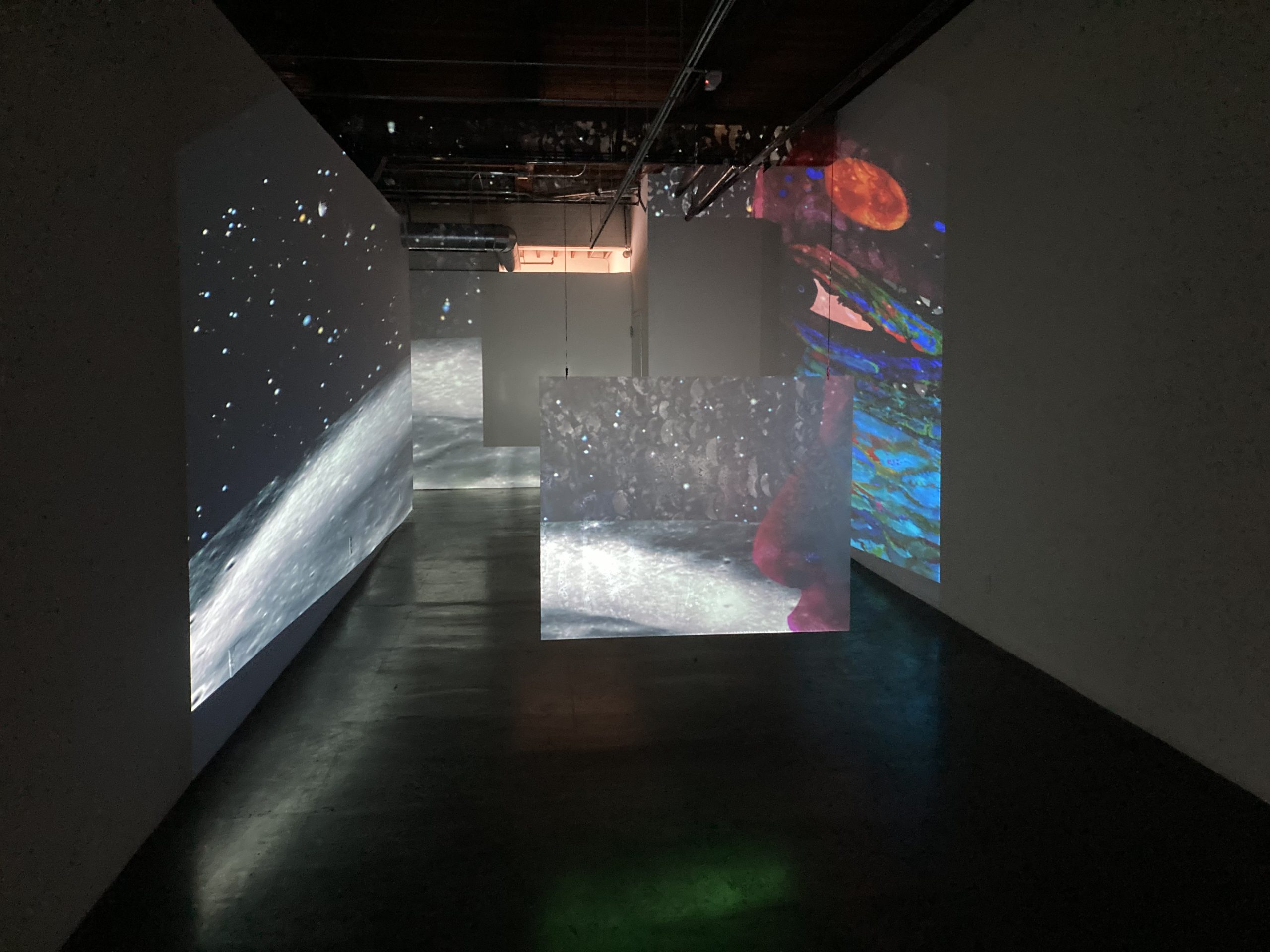
“पौर्णिमा : Gazing Into The Full Moon Night” (2022), projected video, dimensions variable. Photo Credit: Kelsey Bosch
AP: How do you orient your body to the space?
KB: When I arrived the imagery of the Arabian Sea flooded the room. I was swept in immediately, overtaken by water and all the light bouncing around the room from the projectors and mirrors; I thought about reflective and sparkly things, stars, and dreamscapes. As I began moving through the space I noticed the inclusion of my body in the imagery, an eclipsing body orbiting the projector. I am a moon myself. I considered attempting to find a path through the entire exhibition without creating an eclipse. However, taken by the imagery running across multiple planes in the gallery, I got caught up in the arrangement of the projectors. I began using my body as a locator of light.
Not being a performance artist, the experience of wandering through the exhibition felt performative, or perhaps ritualistic. First flowing through its entirety to take it all in, I later spent more time in each space experiencing the image and sound completely and took note of the consideration of the gallery architecture. I circled through three or four times, passing from earthly to lunar landscapes, the elongation and bending of imagery and the shortening of space. Space suddenly seemed much more malleable.

“पौर्णिमा : Gazing Into The Full Moon Night” (2022), projected video, dimensions variable. Photo Credit: Ellen Mueller
KB: What is the relationship between the lone tree and the rest of the exhibition?
AP: To me the lone tree is a gathering point as well as part of the story. It’s the only three-dimensional (in the round) work that is in the exhibition – aside from the mirrors. And this to me amplifies the 2D aspect of the work. It also is positioned in the middle of two galleries and so I see it as this point of rest for the “traveler.” The small scale of the tree allows for more intimate examination of it and again re-orienting us to our surroundings and ourselves. Roshan’s work is all connected in some way. The moon, the tides, the sounds, light, self, identity, home – all are present in the work that allows for multiple entry points to the work. The work is not singular or linear, but multifaceted, vast and yet structured by a layer of comfort and familiarity. Roshan’s work brings down barriers and strips away the hierarchies of art and design associated with the white wall. This truly allows for the viewers to feel involved, to feel a sense of agency.
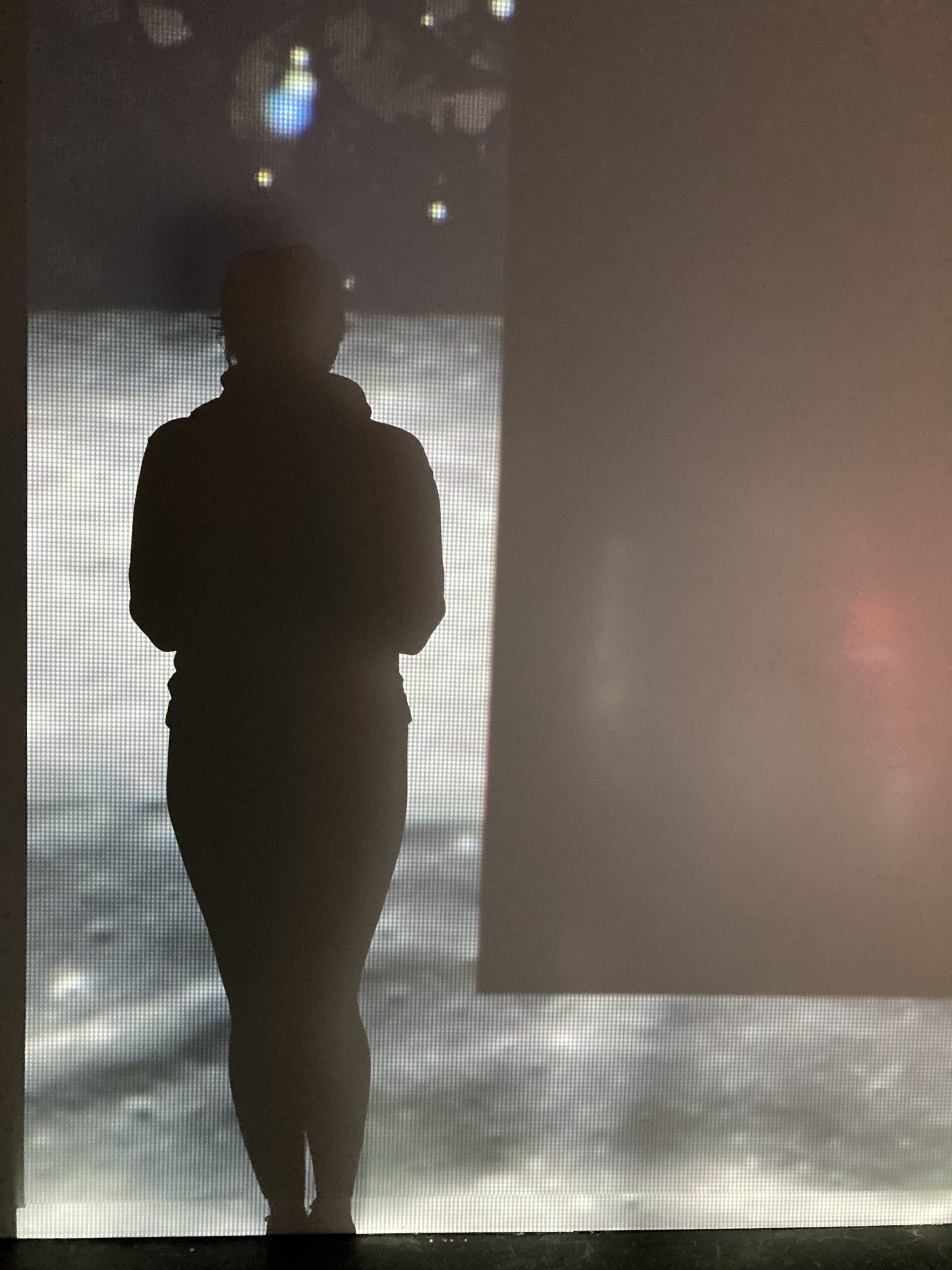
“पौर्णिमा : Gazing Into The Full Moon Night” (2022), projected video, dimensions variable. Photo Credit: Kelsey Bosch
AP: How does time operate in relation to the show?
KB: Time operates cyclically through the looping imagery and sound, pairing with lunar cycles and orbits. But time does not operate without space, and there is an extreme collapsing of space. In the front of the gallery is imagery of the Arabian Sea, Shandtadurga Temple, an animation inspired by Un voyage dans la lune, suggesting that I am situated on earth. In the back of the gallery the lunar landscape is seen as though I am standing on the moon. So spacetime is collapsing or shortening. The tree and moon sculptures within the exhibition remain fixed and ageless, which stabilize that I am still to understand time on human scale. This reminded me of the uncanny relativity of time while traveling through space. Time is familiar and yet unknowable, its scale too unfathomably large for our senses.
Because of time’s unknowability, I wanted to let go of my understanding of the physical world; despite what I know of time, my experience here felt timeless.
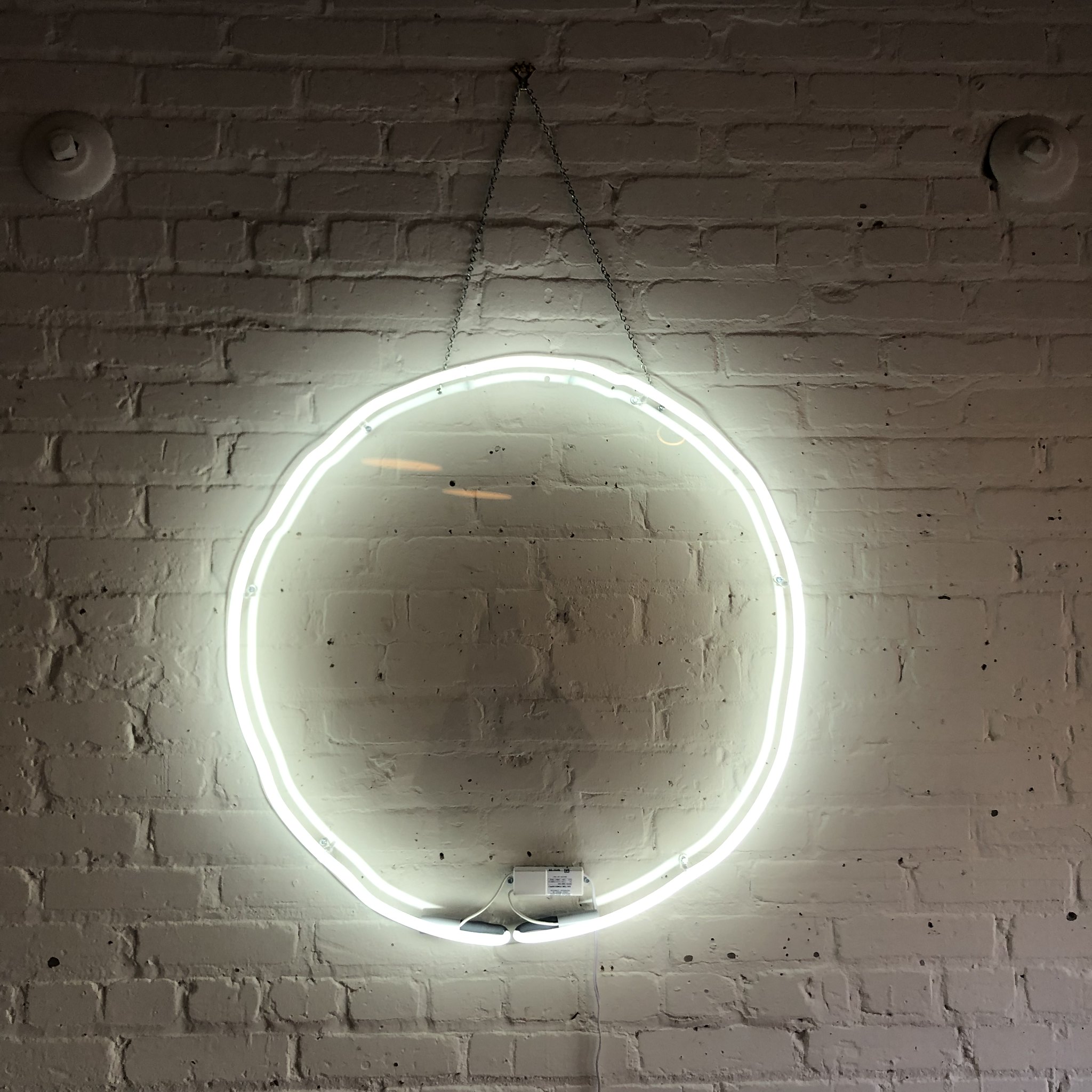
“पौर्णिमा : Gazing Into The Full Moon Night” (2022), neon wall sculpture. Photo Credit: Ellen Mueller
KB: How did sound affect your experience of the show?
AP: Sound is a beautiful phenomenon. Personally, sound to me is connected to memory. While I recall that there is sound in the exhibition looking back at it I am having trouble pinpointing the exact sounds within the space. I think Roshan’s awareness of sound is special to her practice and her work. Roshan is a storyteller and the way that she selects words, pitches, tones embodies so many metaphors. That being said I personally resonated more with the echoes of the space and the rustling of bodies moving around and navigating the exhibition. There was a sense of interconnectedness that contributed to a collective experience, but also an individual one.
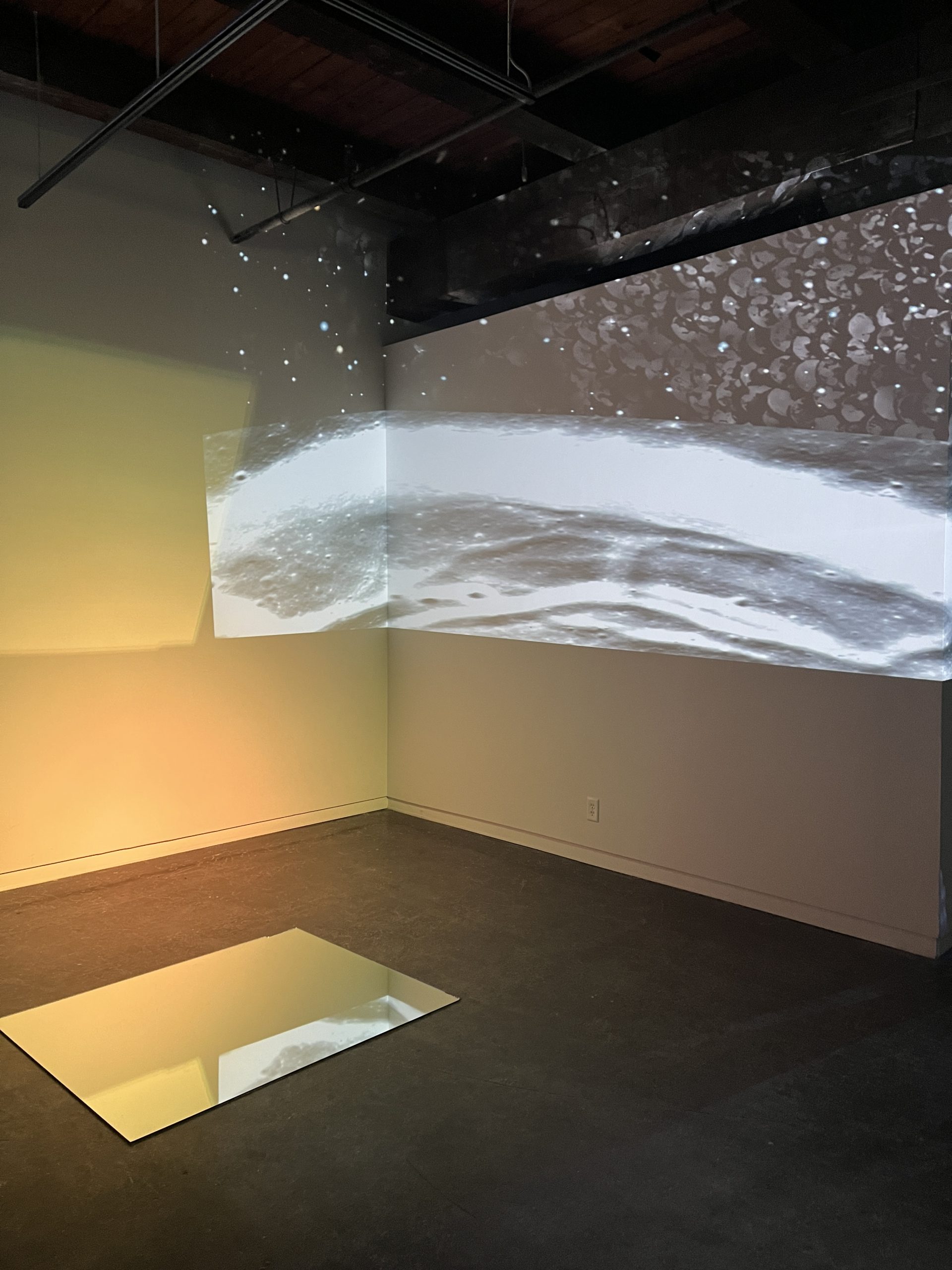
“पौर्णिमा : Gazing Into The Full Moon Night” (2022), projected video, dimensions variable. Photo Credit: Alonzo Pantoja
AP: Where do you stop to rest?
KB: I found myself resting in the lunar landscape, on my own trip to the moon. When I first entered that space it felt a little disorienting to see myself projected on the moon. This is likely the closest I will ever get to walking on that landscape so I spent a lot of time there…playing more so than resting.

“पौर्णिमा : Gazing Into The Full Moon Night” (2022), projected video, dimensions variable. Photo Credit: Ellen Mueller
KB: Where did you find yourself lingering within the exhibition, and why that place?
AP: One of the immediate things that I connected with was the curtain that was at the beginning of the exhibition. It not only reminded me of home, but it also invites the audience to be part of the installation. Soon after you are welcomed by shadows, lights, echoes and movement. There are multiple gathering points within the gallery and Roshan does a poignant job of utilizing mirrors not only formally, but conceptually. I found myself gravitating to the mirrors – perhaps because of their familiarity or perhaps because of the way that the light reflected. I saw these mirrors as portals, entry points to the work, but also as a way to re-orientate myself to the exhibition. Throughout the exhibition I kept looking for the mirrors and trying to see where they were pointing to. Questions that came up: how did I appear? How did others appear? What else appears in the mirrors?
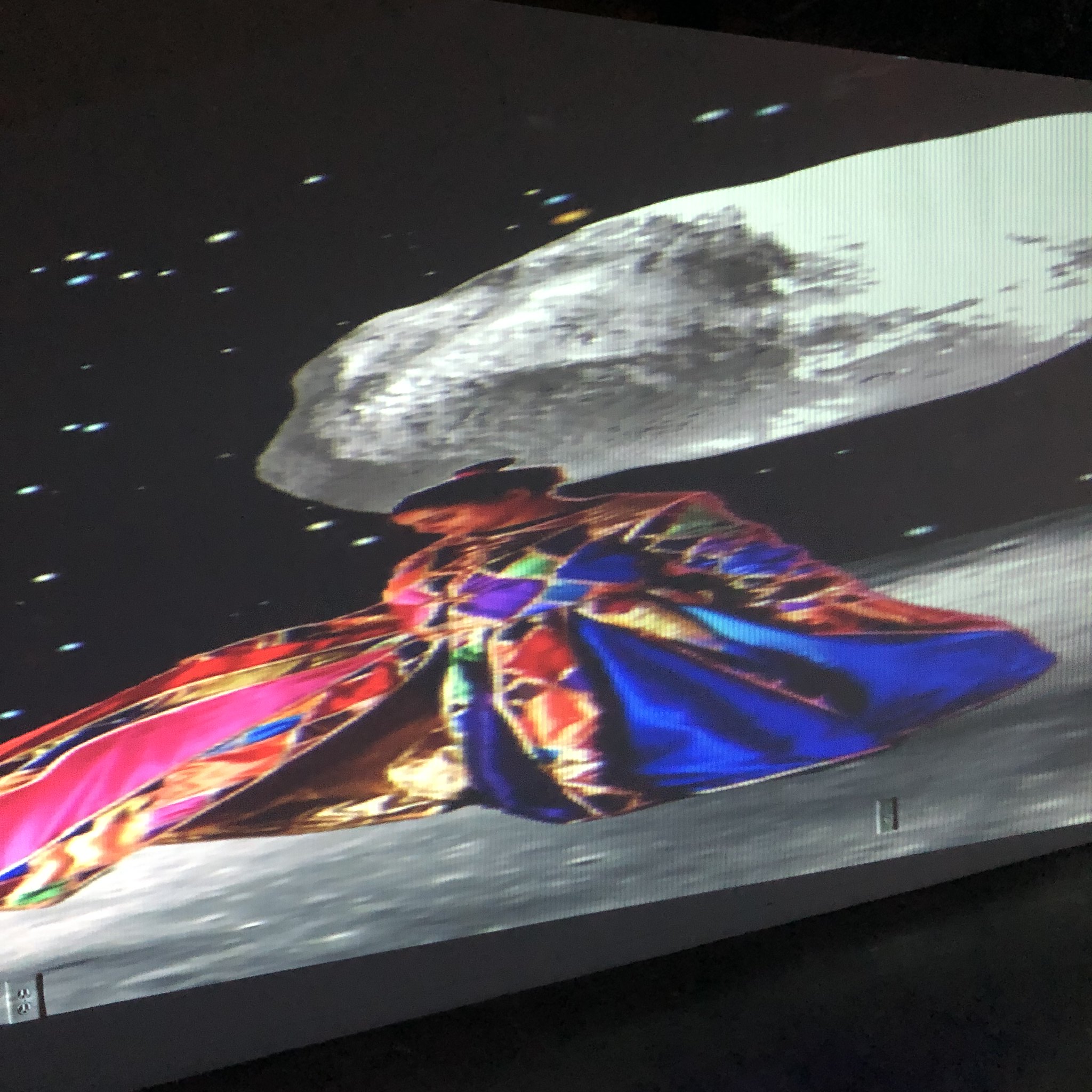
“पौर्णिमा : Gazing Into The Full Moon Night” (2022), projected video, dimensions variable. Photo Credit: Ellen Mueller
Kelsey Bosch is a media artist and interactive sound designer who teaches media art, filmmaking, and graphic design at St. Olaf College, Minneapolis College of Art and Design, and St. Cloud State University.
Alonzo Pantoja is a queer, brown artist and educator – currently teaching at Augsburg University, Minneapolis College of Art and Design and the Textile Center. Instagram: @cilantro.cutie
Disclosure: I know Kelsey Bosch, Alonzo Pantoja, and Roshan Ganu from when I was directing the MFA program at MCAD; all three are alumni of the program.
